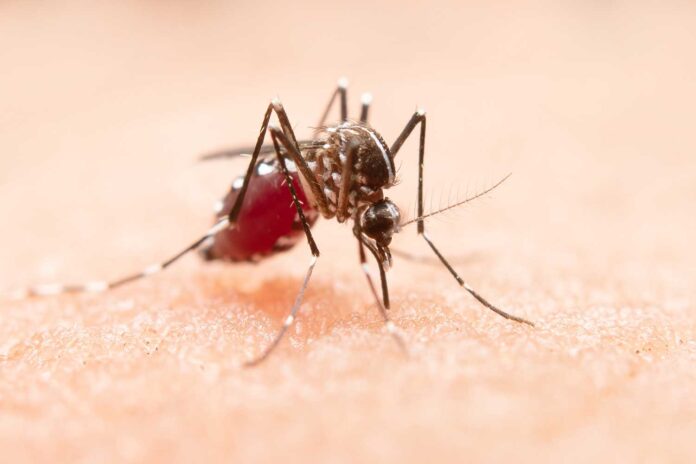Current Situation in Guangzhou
Health authorities in Guangdong Province are reporting a concerning rise in mosquito-borne diseases. As of July 26, 2025, a total of 140 locally transmitted dengue fever cases have been confirmed across the province. Guangzhou alone reported 22 cases during the week of July 20–26.
Between July 7–13, the Hong Kong Centre for Health Protection noted 51 dengue cases in Guangdong, with the most cases recorded in Guangzhou, Zhongshan, Foshan, and Chaozhou.

In addition to dengue, Chikungunya fever is emerging as a growing health concern. At least 22 cases were identified in Guangzhou during the week (July 20–26), according to provincial health data.
Chikungunya, pronounced CHIK-un-GUN-yuh, derives its name from the Kimakonde language of East Africa. It roughly translates to “that which bends up,” describing the posture of those suffering from severe joint pain. While there is no alternate English name, it’s sometimes informally called the “bending disease” due to its debilitating symptoms.
Response Measures in Guangzhou
To contain the outbreaks, the city implemented an Intensive Mosquito Control Week in July:
- All 177 subdistricts across 11 districts in Guangzhou carried out targeted mosquito eradication campaigns.
- Nearly 800 trained vector control personnel were deployed.
- Key sites—including hospitals, schools, eldercare centers, construction sites, and waste facilities—underwent intensive disinfection.
Healthcare System Readiness
- 13 designated hospitals across the city are equipped to treat dengue and chikungunya patients.
- Strict screening protocols are in place for individuals presenting with fever above 38°C, rashes, or joint pain.
Wider Regional and Global Context
Guangdong Province Totals
- By July 26, 4,824 chikungunya cases were reported province-wide—all classified as mild, with no deaths.
- The outbreak is centered in Foshan (2,882 cases), linked to an imported case from Sri Lanka.
Contributing Factors
- High temperatures and increased rainfall have created ideal breeding conditions for Aedes mosquitoes (Asian tiger mosquitoes, 白纹伊蚊).
- The Indian Ocean strain of chikungunya currently in circulation is highly transmissible via this mosquito species.
World Health Organization Alert
The WHO has drawn comparisons to the 2004–2005 global chikungunya epidemic, warning that up to 5.6 billion people live in areas at risk of transmission. In Europe, France has reported local transmission and over 800 imported cases since May 2025.
Travel Health Guidelines

Personal Protection
- Wear light-colored long sleeves and pants, especially during daylight hours when mosquitoes are most active.
- Apply mosquito repellents containing DEET or picaridin to exposed skin.
- Avoid shaded and vegetated areas where mosquitoes are likely to gather.
Environmental Precautions
- Regularly empty standing water from containers like flowerpots, buckets, and bins to reduce mosquito breeding.
- Take extra caution in areas undergoing mosquito control operations.
Know the Symptoms
- Watch for: fever, rash, headache, and joint or muscle pain.
- If symptoms appear within 12 days of travel to affected areas, seek medical attention promptly.
- Inform healthcare providers of any recent travel and possible mosquito exposure.
Medication Advice
- Do not take aspirin if dengue is suspected due to bleeding risks.
- Use acetaminophen (paracetamol) to manage fever and pain in both dengue and chikungunya cases.

Stay informed through official health advisories and take proactive steps to protect yourself and others. For continuous updates, refer to tropicalhainan.com and regional health authority notices.
Related article: Medical Insurance for Foreign Talents in Hainan; What you Need to Know








